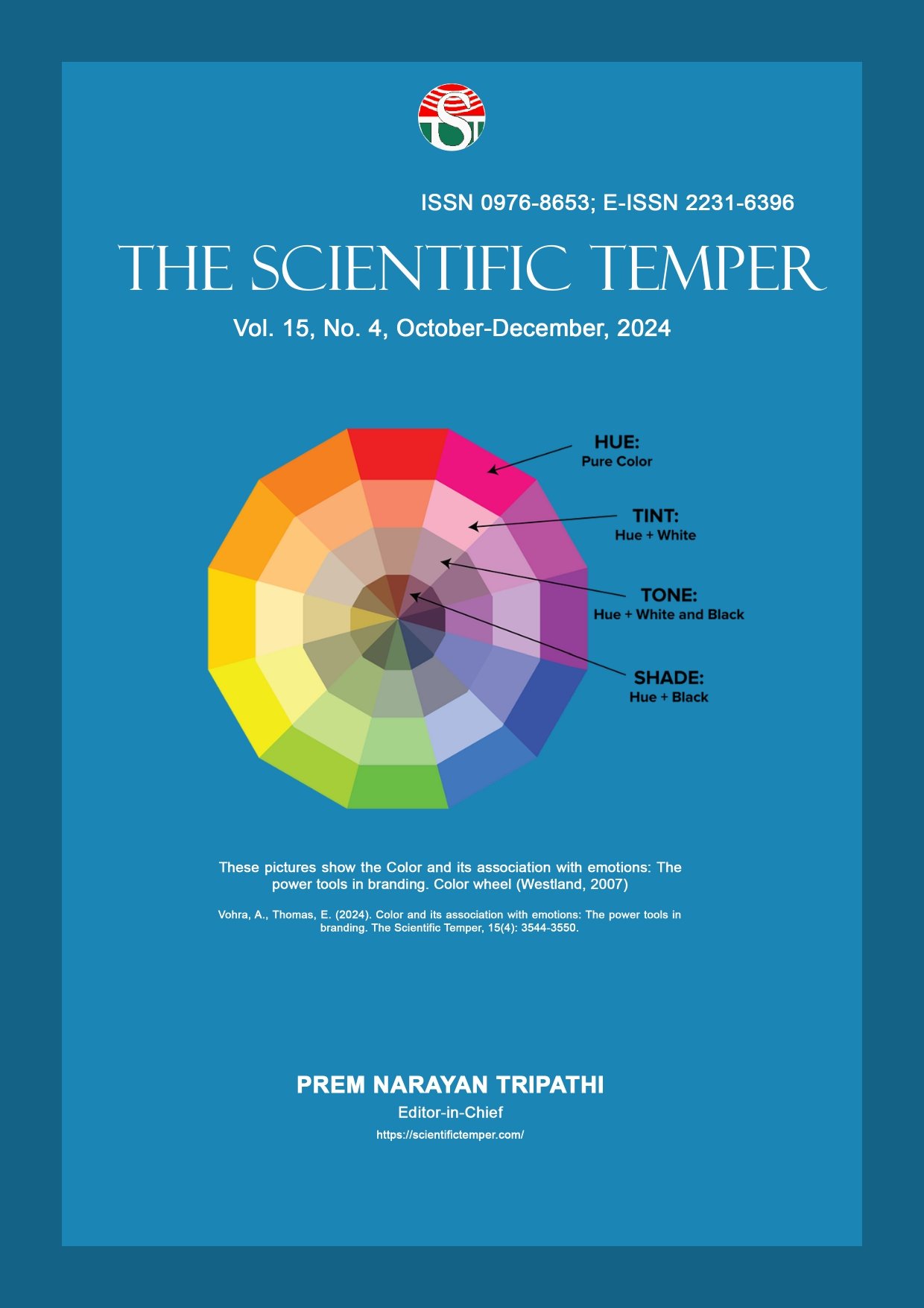Evaluating the effectiveness of the Gyankunj Project: Teachers’ perceptions from Gujarat
Downloads
Published
DOI:
https://doi.org/10.58414/SCIENTIFICTEMPER.2024.15.spl-2.14Keywords:
Gyankunj Project, Educational technology, Teacher perceptions, Academic improvement, Student engagementDimensions Badge
Issue
Section
License
Copyright (c) 2024 The Scientific Temper

This work is licensed under a Creative Commons Attribution-NonCommercial-ShareAlike 4.0 International License.
The Gyankunj Project is a pivotal initiative aimed at transforming the educational framework in Gujarat by integrating advanced digital tools into the classroom. This project raises the overall level of education by modernizing classrooms and bringing teaching methods in line with contemporary educational standards (Chaudhari, A. N. 2022). This enhancement ensures that students receive a quality education that is relevant to today’s technological advancements. This study aims to evaluate the effectiveness of the Gyankunj Project in enhancing educational outcomes from the perspective of teachers in Gujarat. By targeting a sample size of 350 teachers, the research investigates their perceptions regarding the project’s impact on academic ability, the overall level of education, and student engagement. The research also examines the relationship between the demographics of instructor’s age, gender, and faculty in particular and their perceptions of the initiative’s success. Findings reveal that teachers overwhelmingly believe the Gyankunj Project improves academic abilities, raises educational standards, and increases student engagement. Moreover, positive perceptions are consistently observed across different demographic groups, highlighting the project’s broad-based acceptance and effectiveness. The study underscores the significance of the Gyankunj Project in modernizing education and its potential to make a substantial and lasting impact on the educational landscape of Gujarat.Abstract
How to Cite
Downloads
Similar Articles
- Susithra N, Rajalakshmi K, Ashwath P, Performance analysis of compressive sensing and reconstruction by LASSO and OMP for audio signal processing applications , The Scientific Temper: Vol. 14 No. 01 (2023): The Scientific Temper
- N Harini, N Santhi, Challenges and opportunities in product development using natural dyes , The Scientific Temper: Vol. 14 No. 01 (2023): The Scientific Temper
- Kanthalakshmi S, Nikitha M. S, Pradeepa G, Classification of weld defects using machine vision using convolutional neural network , The Scientific Temper: Vol. 14 No. 01 (2023): The Scientific Temper
- R. Porselvi, D. Kanchana, Beulah Jackson, L. Vigneash, Dynamic resource management for 6G vehicular networks: CORA-6G offloading and allocation strategies , The Scientific Temper: Vol. 15 No. 02 (2024): The Scientific Temper
- N. Sasirekha, R. Anitha, Vanathi T, Umarani Balakrishnan, Automatic liver tumor segmentation from CT images using random forest algorithm , The Scientific Temper: Vol. 14 No. 03 (2023): The Scientific Temper
- N. Saranya, M. Kalpana Devi, A. Mythili, Summia P. H, Data science and machine learning methods for detecting credit card fraud , The Scientific Temper: Vol. 14 No. 03 (2023): The Scientific Temper
- A. R. Jasmine Begum, M. Parveen, S. Latha, IoT based home automation with energy management , The Scientific Temper: Vol. 14 No. 03 (2023): The Scientific Temper
- NITHYA R, shruthi D, Sindhuja S, Sneha S, Challenges encountered by health care professionals in monitoring adverse events due to medical devices: A review , The Scientific Temper: Vol. 14 No. 02 (2023): The Scientific Temper
- Dileep Pulugu, Shaik K. Ahamed, Senthil Vadivu, Nisarg Gandhewar, U D Prasan, S. Koteswari, Empowering healthcare with NLP-driven deep learning unveiling biomedical materials through text mining , The Scientific Temper: Vol. 15 No. 02 (2024): The Scientific Temper
- Divya R., Vanathi P. T., Harikumar R., An optimized cardiac risk levels classifier based on GMM with min- max model from photoplethysmography signals , The Scientific Temper: Vol. 15 No. 03 (2024): The Scientific Temper
<< < 5 6 7 8 9 10 11 12 13 14 > >>
You may also start an advanced similarity search for this article.


